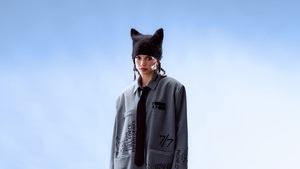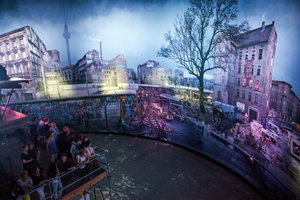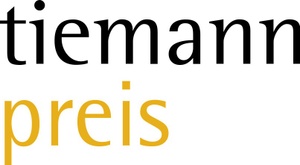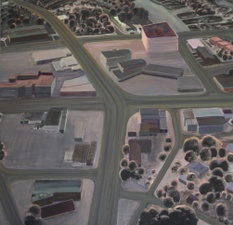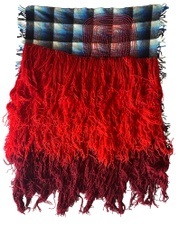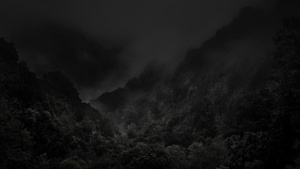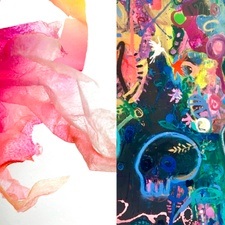Ausstellung: Julian Stalbohm
Ausstellungseröffnung: 16.04.21, 19:00
Öffnungszeiten: 24/7
LVX. Pavillon der Volksbühne am Rosa-Luxemburg-Platz
Der Berliner Künstler Julian Stalbohm (1983) zeigt in einer Einzelausstellung im Pavillon Ansichten von Vulkanen.
Julian Stalbohm, Views of Volcanos, 2021
In the prologue to her heady, historical novel The Volcano Lover: A Romance, Susan Sontag makes a series of appeals to her reader — first to enter a flea-market; then, an auction house in England; up to the summit of a volcano; and then flash, comma dash period — the reader is shuttled to the writer's desk, mid-spring in Manhattan, 1992. Sontag’s arch, self-aware introduction is juicy and fast-paced like a movie trailer; across a few pages, centuries move back and forth, volcanos destroy landscapes and survivors are revived as storytellers. The prologue ends with Sontag offering two perspectives on the topic of catastrophe.
“One view of catastrophe,” Sontag says, is to believe that it ends. That history is bound to time, and that time will continue to move inexorably forward. “It is the worst. And if it is the worst, then unique. Which means unrepeatable. Let’s put it behind us. Let’s not be doomsayers.” The other view of catastrophe, says Sontag, is held by those who believe that any unique moment is temporary, “what happens once can happen again”; put another way, if something is the worst, it may still get worse. “You’ll see,” the narrator says, “just wait.”
In Views of Volcanos, a new exhibition by Berlin-based artist Julian Stalbohm, sixteen photographic prints depict a series of wagers that splinter the temporal logic that binds Sontag’s reader to one view of catastrophe or the other. Stalbohm fills the square-shaped field on a betting slip (produced by UK-based bookmaker William Hill, and purchased by the artist in August 2018) with scrawled incantations that put money on both of Sontag’s views, and then some. In thick black ink, one reads, “Mount Vesuvio will be the next volcano to heavily erupt,” with a £66 ante. Another reads, “Mount Puyehue will be the next volcano to heavily erupt,” this one bought at £12. The next: “Mount Tambora will be the next volcano to heavily erupt,” £20. Each slip—the kind bought on impulse at a gas or service station when caught, suddenly, in a mire sometimes called hope—is cast onto large silver-gelatin photo paper and enlarged maximally, its size as Pompeiian as its stakes. This is a set of recombinatory harbingers—ways to be borne or thrown like dice.
The prints are glossy and reflective. Rather than absorbing light—as might enter the glass encasement of Berlin’s Volksbühne Pavilion where seven of Stalbohm’s prints hang side-by-side—the photographs reflect it back in abstract flashes, as you might see on a freshly cooling glob of obsidian, if it were to catch and refract the rays of a torched orb in the sky, some time in prehistory, before it was ever called the Sun.
Stalbohm’s prints come alive on our close inspection. With muted pastels, he has worked elements of color onto the printed substrate. In some, the compositional field is bifurcated, or turned into a grid, suggesting seriality but who knows in what order. Depending on the bet cast, a minute might feel like a century, or the reverse, and heavy volcanic activity will cease followed by eons of dormancy interrupted by a rumble then silence then a surge, as life is interrupted with everyday things like love or death; risk and chance; or just: hey, beware; or, hey, false alarm.
Language is elemental to Stalbohm’s practice, and it wavers between functions, appearing gestural in form but resolute in disposition. Words appear both as design (i.e. the text and fields provided on state-sanctioned betting slips) and as a reference to non-retinal phenomena, things that cannot withstand design. Stalbohm uses of lots of capital letters, but never indiscriminately. I am reminded of the American poet Hannah Weiner’s 1978 volume Clairvoyant Journal, where she used a typewriter to record all the language she saw in real time. Capital letters are used to signify the language Hannah Weiner sees, “IN THE AIR.” Views of Volcanos suggests the way to view catastrophe itself has yet to be decided, either by a better or by something worse—now’s your chance.
Text: Shiv Kotechva


